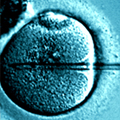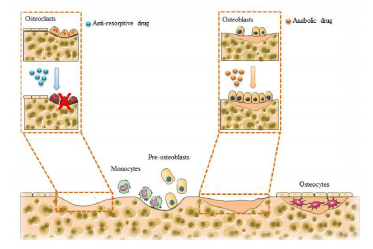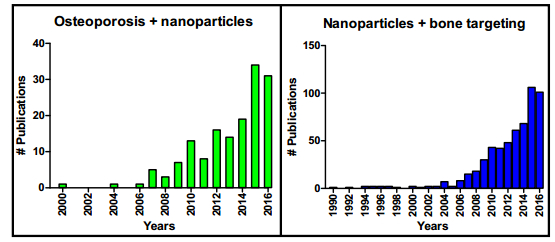|
[1]
|
Kanis JA, Kanis JA (1994) Assessment of fracture risk and its application to screening for postmenopausal osteoporosis: synopsis of a WHO report. Osteoporosis Int 4: 368–381.
|
|
[2]
|
Beck GR, Ha SW, Camalier CE, et al. (2012) Bioactive silica-based nanoparticles stimulate bone-forming osteoblasts, suppress bone-resorbing osteoclasts, and enhance bone mineral density in vivo. Nanomed Nanotechnol Biol Med 8: 793–803.
|
|
[3]
|
Khajuria DK, Razdan R, Mahapatra DR (2011) Drugs for the management of osteoporosis: a review. Rev Bras Reumatol 51: 365–382.
|
|
[4]
|
Arcos D, Boccaccini AR, Bohner M, et al. (2014) The relevance of biomaterials to the prevention and treatment of osteoporosis. Acta Biomater 10: 1793–1805.
|
|
[5]
|
Wei D, Jung J, Yang H, et al. (2016) Nanotechnology treatment options for osteoporosis and its corresponding consequences. Curr Osteoporosis Rep 2016: 1–9.
|
|
[6]
|
Riggs BL, Melton LJ (2015) The worldwide problem of osteoporosis: insights afforded by epidemiology. Bone 17: 505S–511S.
|
|
[7]
|
Mackey PA, Whitaker MD (2015) Osteoporosis: a therapeutic update. J Nurse Pract 11: 1011–1017.
|
|
[8]
|
Hernlund E, Svedbom A, Ivergård M, et al. (2013) Osteoporosis in the European Union: medical management, epidemiology and economic burden: a report prepared in collaboration with the international osteoporosis foundation (IOF) and the european federation of pharmaceutical industry associations (EFPIA). Arch Osteoporosis 8: 1–115.
|
|
[9]
|
Kanis JA, McCloskey EV, Johansson H, et al. (2013) European guidance for the diagnosis and management of osteoporosis in postmenopausal women. Osteoporosis Int 24: 23–57.
|
|
[10]
|
Kim T, Singh RK, Sil M, et al. (2016) Acta biomaterialia inhibition of osteoclastogenesis through siRNA delivery with tunable mesoporous bioactive nanocarriers. Acta Biomater 29: 352–364.
|
|
[11]
|
Hodsman AB, Bauer DC, Dempster DW, et al. (2005) Parathyroid hormone and teriparatide for the treatment of osteoporosis: a review of the evidence and suggested guidelines for its use. Endocr Rev 26: 688–703.
|
|
[12]
|
Weitzmann MN, Ha SW, Vikulina T, et al. (2015) Bioactive silica nanoparticles reverse age-associated bone loss in mice. Nanomed Nanotechnol Biol Med 11: 959–967.
|
|
[13]
|
Khajuria DK, Disha C, Vasireddi R, et al. (2016) Risedronate/zinc-hydroxyapatite based nanomedicine for osteoporosis. Mat Sci Eng C Mater 63: 78–87.
|
|
[14]
|
Giger EV, Castagner B, Leroux JC (2013) Biomedical applications of bisphosphonates. J Control Release 167: 175–188.
|
|
[15]
|
Iñiguez ANM, Clarke BL (2015) Bone biology, signaling pathways, and therapeutic targets for osteoporosis. Maturitas 82: 245–255.
|
|
[16]
|
Kanakaris NK, Petsatodis G, Tagil M, et al. (2009) Is there a role for bone morphogenetic proteins in osteoporotic fractures? Injury 40: S21–S26.
|
|
[17]
|
Lee D, Heo DN, Kim H, et al. (2016) Inhibition of osteoclast differentiation and bone resorption by bisphosphonate- conjugated gold nanoparticles. Sci Rep 6: 27336–27346.
|
|
[18]
|
Eriksen EF, Díez PA, Boonen S (2014) Update on long-term treatment with bisphosphonates for postmenopausal osteoporosis: a systematic review. Bone 58: 126–135.
|
|
[19]
|
Black DM, Schwartz AV, Ensrud KE, et al. (2006) Effects of continuing or stopping alendronate after 5 years of treatment: the fracture intervention trial long-term extension (FLEX): a randomized trial. JAMA 296: 2927–2938.
|
|
[20]
|
Dougall WC, Glaccum M, Charrier K, et al. (1999) RANK is essential for osteoclast and lymph node development. Gene Dev 13: 2412–2424.
|
|
[21]
|
Trejo CG, Lozano D, Manzano M, et al. (2010) The osteoinductive properties of mesoporous silicate coated with osteostatin in a rabbit femur cavity defect model. Biomaterials 31: 8564–8573.
|
|
[22]
|
Barry M, Pearce H, Cross L, et al. (2016). Advances in nanotechnology for the treatment of osteoporosis. Curr Osteoporosis Rep 14: 87–94.
|
|
[23]
|
Saini D, Fazil M, Ali MM, et al. (2014). Formulation, development and optimization of raloxifene-loaded chitosan nanoparticles for treatment of osteoporosis. Drug Deliv 7544: 1–14.
|
|
[24]
|
Ponnapakkam T, Katikaneni R, Sakon J, et al. (2014) Treating osteoporosis by targeting parathyroid hormone to bone. Drug Discov Today 19: 204–208.
|
|
[25]
|
Narayanan D, Anitha A, Jayakumar R, et al. (2013) In vitro and in vivo evaluation of osteoporosis therapeutic peptide PTH 1-34 loaded PEGylated chitosan nanoparticles. Mol Pharm 10: 4159–4167.
|
|
[26]
|
Lindsay R, Krege JH, Marin F, et al. (2016) Teriparatide for osteoporosis: importance of the full course. Osteoporosis Int 2016: 1–16.
|
|
[27]
|
Ong KL, Villarraga ML, Lau E, et al. (2010) Off-label use of bone morphogenetic proteins in the United States using administrative data. Spine J 35: 1794–1800.
|
|
[28]
|
Carragee EJ, Hurwitz EL, Weiner BK (2011) A critical review of recombinant human bone morphogenetic protein-2 trials in spinal surgery: emerging safety concerns and lessons learned. Spine J 11: 471–491.
|
|
[29]
|
Canalis E (2010) Update in new anabolic therapies for osteoporosis. J Clin Endocr Metab 95: 1496–1504.
|
|
[30]
|
Tokatlian T, Segura T (2010) siRNA applications in nanomedicine. Wires Nanomed Nanobi 2: 305–315.
|
|
[31]
|
Guo B, Wu H, Tang T, et al. (2012) A delivery system targeting bone formation surfaces to facilitate RNAi-based anabolic therapy. Nat Med 18: 307–314.
|
|
[32]
|
Lin JH (1996) Bisphosphonates: a review of their pharmacokinetic properties. Bone 18: 75–85.
|
|
[33]
|
Aoki K, Alles N, Soysa N, et al. (2012) Peptide-based delivery to bone. Adv Drug Deliver Rev 64: 1220–1238.
|
|
[34]
|
Cenni E, Granchi D, Avnet S, et al. (2008) Biocompatibility of poly(d,l-lactide-co-glycolide) nanoparticles conjugated with alendronate. Biomaterials 29: 1400–1411.
|
|
[35]
|
Choi SW, Kim JH (2007) Design of surface-modified poly(d,l-lactide-co-glycolide) nanoparticles for targeted drug delivery to bone. J Control Release 122: 24–30.
|
|
[36]
|
Xinluan W, Yuxiao L, Helena NH, et al. (2015) Systemic drug delivery systems for bone tissue regeneration-a mini review. Curr Pharm Design 21: 1575–1583.
|
|
[37]
|
Yokogawa K, Miya K, Sekido T, et al. (2001) Selective delivery of estradiol to bone by aspartic acid oligopeptide and its effects on ovariectomized mice. Endocrinology 142: 1228–1233.
|
|
[38]
|
Pignatello R (2011) PLGA-alendronate conjugate as a new biomaterial to produce osteotropic drug nanocarriers. Biomaterials Applications for Nanomedicine. InTech.
|
|
[39]
|
Heller DA, Levi Y, Pelet JM, et al. (2013) Modular "click-in-emulsion" bone-targeted nanogels. Adv Mater 25: 1449–1454.
|
|
[40]
|
Willson TM, Henke BR, Momtahen TM, et al. (1996) Bone targeted drugs 2 synthesis of estrogens with hydroxyapatite affinity. Bioorg Med Chem Lett 6: 1047–1050.
|
|
[41]
|
Yarbrough DK, Hagerman E, Eckert R, et al. (2010) Specific binding and mineralization of calcified surfaces by small peptides. Calcified Tissue Int 86: 58–66.
|
|
[42]
|
Carrow JK, Gaharwar AK (2015) Bioinspired polymeric nanocomposites for regenerative medicine. Macromol Chem Phys 216: 248–264.
|
|
[43]
|
Lee MS, Su CM, Yeh JC, et al. (2016) Synthesis of composite magnetic nanoparticles Fe3O4 with alendronate for osteoporosis treatment. Int J Nanomed 11: 4583–4594.
|
|
[44]
|
Kedmi R, Ben-Arie N, Peer D (2010) The systemic toxicity of positively charged lipid nanoparticles and the role of Toll-like receptor 4 in immune activation. Biomaterials 31: 6867–6875.
|
|
[45]
|
Hwang SJ, Lee JS, Ryu TK, et al. (2016) Alendronate-modified hydroxyapatite nanoparticles for bone-specific dual delivery of drug and bone mineral. Macromol Res 24: 623–628.
|
|
[46]
|
Lu T, Ma Y, Hu H, et al. (2011) Ethinylestradiol liposome preparation and its effects on ovariectomized rats' osteoporosis. Drug Deliv 18: 468–477.
|
|
[47]
|
Allen TM, Cullis PR (2013) Liposomal drug delivery systems: from concept to clinical applications. Adv Drug Deliver Rev 65: 36–48.
|
|
[48]
|
Kundu SK, Sharma AR, Lee SS, et al. (2014) Recent trends of polymer mediated liposomal gene delivery system. Biomed Res Int 2014: 934605–934619.
|
|
[49]
|
Madni A, Sarfraz M, Rehman M, et al. (2014) Liposomal drug delivery: a versatile platform for challenging clinical applications. Journal Pharm Pharm Sci 17: 401–426.
|
|
[50]
|
Fang C, Shi B, Pei YY, et al. (2006) In vivo tumor targeting of tumor necrosis factor-α-loaded stealth nanoparticles: effect of MePEG molecular weight and particle size. Eur J Pharm Sci 27: 27–36.
|
|
[51]
|
Zhang J, Li X, Huang L (2014) Non-viral nanocarriers for siRNA delivery in breast cancer. J Control Release 190: 440–450.
|
|
[52]
|
Hughes J, Yadava P, Mesaros R (2010) Liposomal siRNA delivery. Meth Mol Biol 605: 445.
|
|
[53]
|
Ropert C (1999) Liposomes as a gene delivery system. Braz J Med Biol Res 32: 163–169.
|
|
[54]
|
Hengst V, Oussoren C, Kissel T, et al. (2007) Bone targeting potential of bisphosphonate-targeted liposomes. Preparation, characterization and hydroxyapatite binding in vitro. Int J Pharm 331: 224–227.
|
|
[55]
|
Vert M, Schwach G, Engel R, et al. (1998) Something new in the field of PLA/GA bioresorbable polymers? J Control Release 53: 85–92.
|
|
[56]
|
Mooney DT, Mazzoni CL, Breuer C, et al. (1996) Stabilized polyglycolic acid fibre based tubes for tissue engineering. Biomaterials 17: 115–124.
|
|
[57]
|
Jiang T, Yu X, Carbone EJ, et al. (2014) Poly aspartic acid peptide-linked PLGA based nanoscale particles: potential for bone-targeting drug delivery applications. Int J Pharm 475: 547–557.
|
|
[58]
|
Fu YC, Fu TF, Wang HJ, et al. (2014) Aspartic acid-based modified PLGA-PEG nanoparticles for bone targeting: in vitro and in vivo evaluation. Acta Biomater 10: 4583–4596.
|
|
[59]
|
Cong Y, Quan C, Liu M, et al. (2015) Alendronate-decorated biodegradable polymeric micelles for potential bone-targeted delivery of vancomycin. J Biomat Sci Polym E 26: 629–643.
|
|
[60]
|
Yi H, Wu LQ, Bentley WE, et al. (2005) Biofabrication with chitosan. Biomacromolecules 6: 2881–2894.
|
|
[61]
|
Aktaş Y, Andrieux K, Alonso MJ, et al. (2005) Preparation and in vitro evaluation of chitosan nanoparticles containing a caspase inhibitor. Int J Pharm 298: 378–383.
|
|
[62]
|
Schwarz K, Milne D (1972) Growth-promoting effects of Silicon in rats. Nature 239: 333–334.
|
|
[63]
|
Jugdaohsingh R (2007) Silicon and bone health. J Nutr Health Aging 11: 99–110.
|
|
[64]
|
Boyce BF, Yao Z, Xing L (2010) Functions of nuclear factor κB in bone. Ann Ny Acad Sci 1192: 367–375.
|
|
[65]
|
Nanes MS (2003) Tumor necrosis factor-α: molecular and cellular mechanisms in skeletal pathology. Gene 321: 1–15.
|
|
[66]
|
Yamaguchi M, Neale WM (2012) The intact strontium ranelate complex stimulates osteoblastogenesis and suppresses osteoclastogenesis by antagonizing NF-κB activation. Mol Cell Biochem 359: 399–407.
|
|
[67]
|
Ha SW, Neale WM, Beck GR (2014) Bioactive silica nanoparticles promote osteoblast differentiation through stimulation of autophagy and direct association with LC3 and p62. ACS Nano 8: 5898–5910.
|
|
[68]
|
Liu F, Fang F, Yuan H, et al. (2013) Suppression of autophagy by FIP200 deletion leads to osteopenia in mice through the inhibition of osteoblast terminal differentiation. J Bone Miner Res 28: 2414–2430.
|
|
[69]
|
Baeza A, Manzano M, Colilla M, et al. (2016) Recent advances in mesoporous silica nanoparticles for antitumor therapy: our contribution. Biomater Sci 4: 803–813.
|
|
[70]
|
Vallet RM, Balas F, Arcos D (2007) Mesoporous materials for drug delivery. Angew Chem 46: 7548–7558.
|
|
[71]
|
Vallet RM, Rámila A, Del Real RP, et al. (2001) A new property of MCM-41: drug delivery system. Chem Mater 13: 308–311.
|
|
[72]
|
Sun W, Han Y, Li Z, et al. (2016) Bone-targeted mesoporous silica nanocarrier anchored by zoledronate for cancer bone metastasis. Langmuir 32: 9237–9244.
|
|
[73]
|
Baeza A, Colilla M, Vallet RM (2015) Advances in mesoporous silica nanoparticles for targeted stimuli-responsive drug delivery. Expert Opin Drug Del 12: 319–37.
|
|
[74]
|
Paris JL, Torre PDL, Manzano M, et al. (2016) Decidua-derived mesenchymal stem cells as carriers of mesoporous silica nanoparticles. in vitro and in vivo evaluation on mammary tumors. Acta Biomater 33: 275–282.
|
|
[75]
|
Jordan A, Scholz R, Maier HK, et al. (2006) The effect of thermotherapy using magnetic nanoparticles on rat malignant glioma. J Neuro-Oncol 78: 7–14.
|
|
[76]
|
Figuerola A, Di Corato R, Manna L, et al. (2010) From iron oxide nanoparticles towards advanced iron-based inorganic materials designed for biomedical applications. Pharmacol Res 62: 126–143.
|
|
[77]
|
Choi SY, Song MS, Ryu PD, et al. (2015) Gold nanoparticles promote osteogenic differentiation in human adipose-derived mesenchymal stem cells through the Wnt/beta-catenin signaling pathway. Int J Nanomed 10: 4383–4392.
|
|
[78]
|
Lee NK, Choi YG, Baik JY, et al. (2005) A crucial role for reactive oxygen species in RANKL-induced osteoclast differentiation. Blood 106: 852–859.
|
|
[79]
|
Sul OJ, Kim JC, Kyung TW, et al. (2010) Gold nanoparticles inhibited the receptor activator of nuclear factor-κb ligand (RANKL)-induced osteoclast formation by acting as an antioxidant. Biosci Biotech Bioch 74: 2209–2213.
|
|
[80]
|
Lean JM, Jagger CJ, Kirstein B, et al. (2015) Hydrogen peroxide is essential for estrogen-deficiency bone loss and osteoclast formation. Endocrinology 146: 728–735.
|
|
[81]
|
Sahana H, Khajuria DK, Razdan R, et al. (2013) Improvement in bone properties by using risedronate adsorbed hydroxyapatite novel nanoparticle based formulation in a rat model of osteoporosis. J Biomed Nanotechnol 9: 193–201.
|
|
[82]
|
Lin L, Chow KL, Leng Y (2009) Study of hydroxyapatite osteoinductivity with an osteogenic differentiation of mesenchymal stem cells. J Biomed Mater Res Part A 89: 326–335.
|
|
[83]
|
Webster TJ, Ergun C, Doremus RH, et al. (2000) Enhanced functions of osteoblasts on nanophase ceramics. Biomaterials 21: 1803–1810.
|
|
[84]
|
Yamaguchi M (2010) Role of nutritional zinc in the prevention of osteoporosis. Mol Cell Biochem 338: 241–254.
|
|
[85]
|
Ito A, Otsuka M, Kawamura H, et al. (2005) Zinc-containing tricalcium phosphate and related materials for promoting bone formation. Curr Appl Phys 5: 402–406.
|















 DownLoad:
DownLoad: